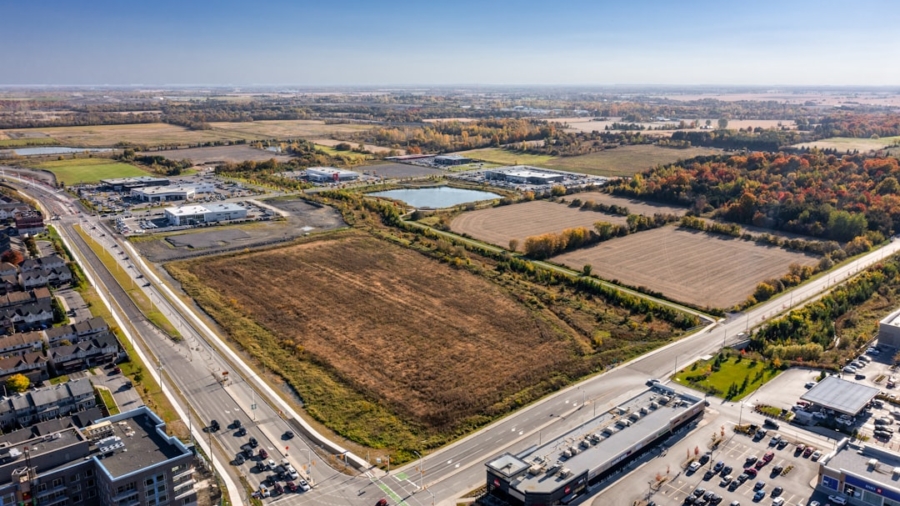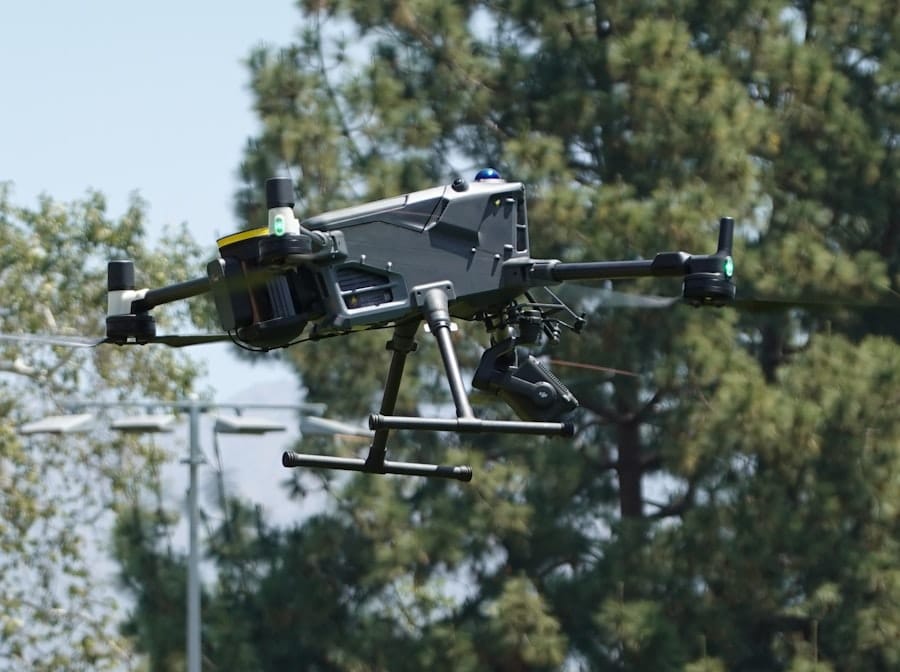The construction industry has long been characterized by its reliance on traditional methods and practices, often resulting in inefficiencies and delays. However, the advent of industrial drones has begun to revolutionize this sector, offering innovative solutions that enhance productivity and streamline operations. These unmanned aerial vehicles (UAVs) are equipped with advanced technology, including high-resolution cameras, LiDAR sensors, and GPS capabilities, enabling them to perform a variety of tasks that were once labor-intensive and time-consuming.
As the construction landscape evolves, the integration of drones is becoming increasingly prevalent, marking a significant shift in how projects are planned, executed, and monitored. The use of industrial drones in construction is not merely a trend; it represents a fundamental change in the way construction professionals approach their work. From surveying and mapping to monitoring job sites and conducting inspections, drones provide a level of precision and efficiency that traditional methods cannot match.
As the industry grapples with challenges such as labor shortages, rising costs, and the need for sustainable practices, drones offer a viable solution that can help mitigate these issues while enhancing overall project outcomes. The following sections will delve deeper into the myriad benefits of utilizing drones in construction, the various types available, and the transformative impact they have on efficiency and safety.
Key Takeaways
- Industrial drones are revolutionizing the construction industry by providing efficient and safe solutions for various tasks.
- The benefits of using industrial drones in construction projects include improved safety, cost savings, accurate data collection, and enhanced project monitoring.
- There are different types of industrial drones for construction, including fixed-wing drones, rotary-wing drones, and hybrid drones, each with specific capabilities and applications.
- Industrial drones improve efficiency and safety in construction by enabling aerial surveys, 3D mapping, progress tracking, and remote monitoring of construction sites.
- Successful construction projects utilizing industrial drones include the construction of bridges, highways, buildings, and infrastructure, showcasing the diverse applications of drone technology in the industry.
Benefits of Using Industrial Drones in Construction Projects
One of the most significant advantages of employing industrial drones in construction projects is their ability to conduct site surveys quickly and accurately. Traditional surveying methods can be labor-intensive and time-consuming, often requiring teams of workers to traverse large areas on foot. In contrast, drones can cover vast expanses in a fraction of the time, capturing high-resolution images and data that can be processed into detailed maps and 3D models.
This rapid data collection not only accelerates the planning phase but also allows for more informed decision-making throughout the project lifecycle. Moreover, drones enhance project monitoring and management by providing real-time insights into job site progress. Construction managers can utilize drone footage to assess work completed against project timelines, identify potential delays, and make necessary adjustments to keep the project on track.
This level of oversight is particularly beneficial for large-scale projects where multiple teams are working simultaneously. By having access to up-to-date aerial imagery, stakeholders can ensure that all aspects of the project align with the original vision and specifications, ultimately leading to improved accountability and transparency.
Types of Industrial Drones for Construction
The market for industrial drones is diverse, with various models designed to meet specific needs within the construction sector. One common type is the fixed-wing drone, which is ideal for covering large areas quickly due to its ability to fly long distances without needing to land frequently. These drones are particularly useful for topographic mapping and land surveying, as they can capture extensive data sets in a single flight.
Their endurance makes them suitable for projects that require comprehensive aerial surveys over expansive terrains. Another prevalent type is the multirotor drone, which offers greater maneuverability and flexibility compared to fixed-wing models. These drones are equipped with multiple rotors that allow them to hover in place, making them perfect for tasks such as site inspections and monitoring construction progress from various angles.
Multirotor drones are often used in conjunction with high-resolution cameras or thermal imaging sensors to detect issues such as heat loss in buildings or structural anomalies that may not be visible from the ground. The versatility of multirotor drones makes them an invaluable tool for construction professionals seeking to enhance their operational capabilities.
How Industrial Drones Improve Efficiency and Safety in Construction
The integration of industrial drones into construction workflows significantly enhances both efficiency and safety on job sites. By automating tasks such as surveying and inspections, drones reduce the need for manual labor, allowing workers to focus on more complex responsibilities that require human expertise.
For instance, when conducting site inspections, drones can quickly identify potential hazards or compliance issues without putting workers at risk by sending them into potentially dangerous areas. In terms of safety, drones play a crucial role in mitigating risks associated with construction activities. They can be deployed to inspect hard-to-reach or hazardous locations, such as rooftops or scaffolding, without exposing workers to dangerous conditions.
This capability is particularly important in industries where safety regulations are stringent, as it allows companies to adhere to compliance standards while ensuring worker safety. Additionally, the data collected by drones can be analyzed to identify trends or patterns related to safety incidents, enabling construction firms to implement proactive measures that further enhance workplace safety.
Examples of Successful Construction Projects Utilizing Industrial Drones
Numerous construction projects around the world have successfully integrated industrial drones into their operations, showcasing the technology’s potential to transform the industry. One notable example is the Hudson Yards development in New York City, one of the largest private real estate developments in U.S. history. Drones were employed throughout the project to monitor progress, conduct inspections, and provide stakeholders with aerial views of the site. The use of drones allowed project managers to maintain oversight over multiple phases of construction while ensuring that timelines were met and quality standards upheld. Another compelling case study is the use of drones in the construction of the Sydney Opera House’s new concert hall. The project team utilized drone technology for site surveys and monitoring during the construction process. By capturing high-resolution images and 3D models of the site, they were able to identify potential challenges early on and make informed decisions that kept the project on schedule. The successful implementation of drone technology not only improved efficiency but also contributed to enhanced collaboration among team members by providing a shared visual reference for discussions.
Regulations and Legal Considerations for Using Industrial Drones in Construction
As industrial drones become more prevalent in construction, understanding the regulatory landscape surrounding their use is essential for compliance and operational success. In many countries, including the United States, drone operations are governed by aviation authorities such as the Federal Aviation Administration (FAA).
Construction companies must also consider privacy laws when deploying drones on job sites. The collection of aerial imagery may inadvertently capture images of private property or individuals without consent, leading to potential legal ramifications. To navigate these challenges effectively, construction firms should establish clear policies regarding drone usage that comply with local regulations while respecting privacy rights.
Engaging legal counsel with expertise in aviation law can further ensure that companies remain compliant while maximizing the benefits of drone technology.
Challenges and Limitations of Industrial Drones in Construction
Despite their numerous advantages, industrial drones also face several challenges and limitations within the construction sector. One significant hurdle is related to weather conditions; adverse weather such as high winds or rain can impede drone operations and affect data quality. For instance, heavy rain may obscure visibility or damage sensitive equipment onboard the drone, leading to delays in data collection or necessitating rescheduling of flights.
Additionally, there are technical limitations associated with drone technology itself. While advancements have been made in battery life and payload capacity, many drones still have restrictions on flight duration and range. This limitation can pose challenges for large-scale projects that require extensive data collection over vast areas.
Furthermore, integrating drone data into existing construction management software can be complex; companies may need to invest in additional training or software solutions to effectively analyze and utilize drone-collected data.
Future Trends and Innovations in Industrial Drones for Construction
Looking ahead, the future of industrial drones in construction appears promising as technological advancements continue to emerge. One notable trend is the increasing integration of artificial intelligence (AI) into drone operations. AI-powered drones can analyze data in real-time, enabling them to make autonomous decisions based on predefined parameters.
This capability could revolutionize tasks such as site inspections by allowing drones to identify issues without human intervention. Another exciting development is the potential for drone swarming technology, where multiple drones work collaboratively on a single task. This approach could enhance efficiency by allowing teams to cover larger areas more quickly or conduct simultaneous inspections across multiple sites.
As drone technology continues to evolve, we can expect further innovations that will enhance their capabilities and applications within the construction industry. In conclusion, industrial drones are poised to play an increasingly vital role in shaping the future of construction. Their ability to improve efficiency, enhance safety, and provide valuable insights into project management makes them an indispensable tool for modern construction professionals navigating an ever-evolving landscape.
As regulations adapt and technology advances, the full potential of industrial drones will continue to unfold, paving the way for a more efficient and innovative construction industry.
In the realm of modern construction, the integration of industrial drones has revolutionized project optimization by enhancing efficiency and accuracy. These drones are pivotal in surveying large areas quickly, monitoring progress, and ensuring safety on construction sites. A related article that delves into technological advancements in different sectors is Best Software for Freight Forwarders 2023. This article explores how software solutions are streamlining operations in the freight forwarding industry, much like how drones are transforming construction projects. Both pieces highlight the importance of adopting cutting-edge technology to improve productivity and outcomes in their respective fields.
FAQs
What are industrial drones?
Industrial drones are unmanned aerial vehicles (UAVs) that are specifically designed and equipped for industrial applications, such as construction, agriculture, mining, and infrastructure inspection. These drones are equipped with advanced sensors, cameras, and software to perform various tasks in industrial settings.
How do industrial drones optimize construction projects?
Industrial drones optimize construction projects by providing real-time aerial surveys, 3D mapping, and progress tracking. They can also be used for site inspections, safety monitoring, and inventory management. Drones help improve efficiency, reduce costs, and enhance safety on construction sites.
What are the benefits of using industrial drones in construction projects?
The benefits of using industrial drones in construction projects include improved project planning and management, enhanced safety and risk mitigation, increased accuracy in measurements and data collection, and reduced time and costs associated with traditional surveying and inspection methods.
What types of construction tasks can industrial drones perform?
Industrial drones can perform a wide range of construction tasks, including site surveying, topographic mapping, progress monitoring, stockpile measurement, as-built documentation, thermal imaging for building inspections, and aerial photography for marketing and project documentation.
Are there any regulations or restrictions for using industrial drones in construction projects?
Yes, there are regulations and restrictions for using industrial drones in construction projects, including obtaining proper permits and licenses, adhering to airspace regulations, and ensuring compliance with privacy and data protection laws. It is important for construction companies to be aware of and follow these regulations when using drones.



